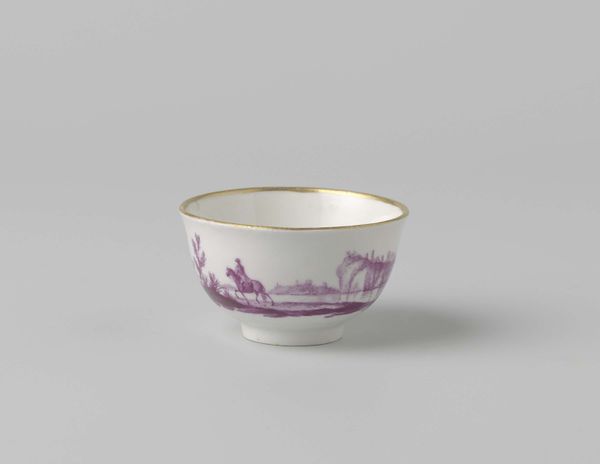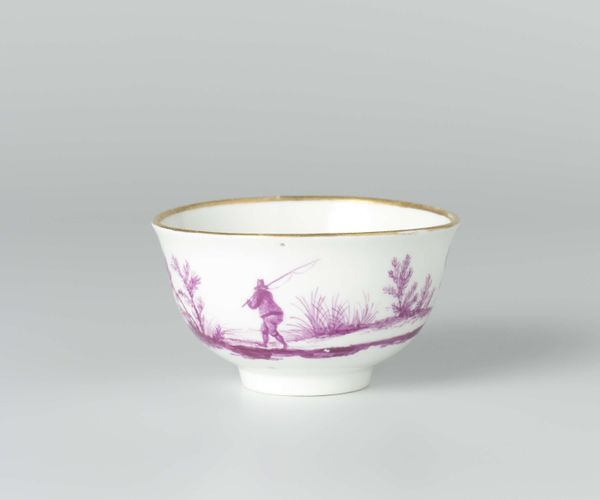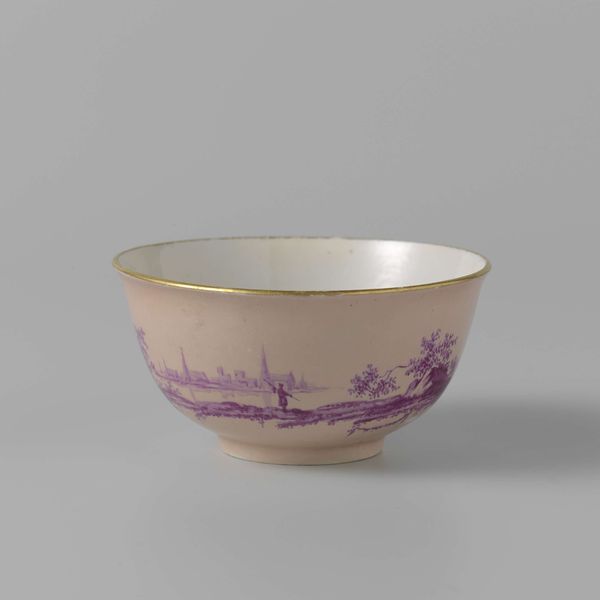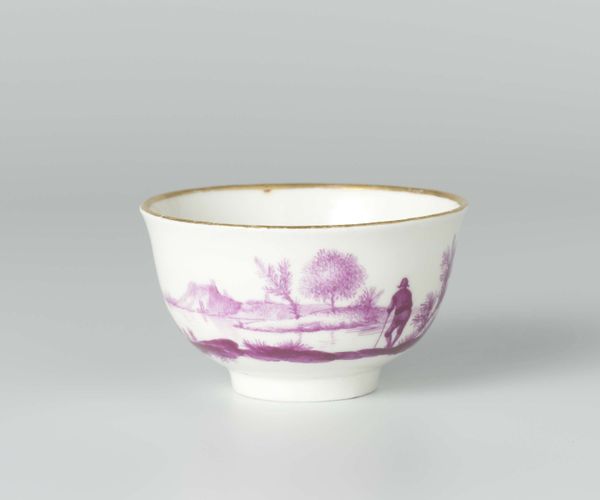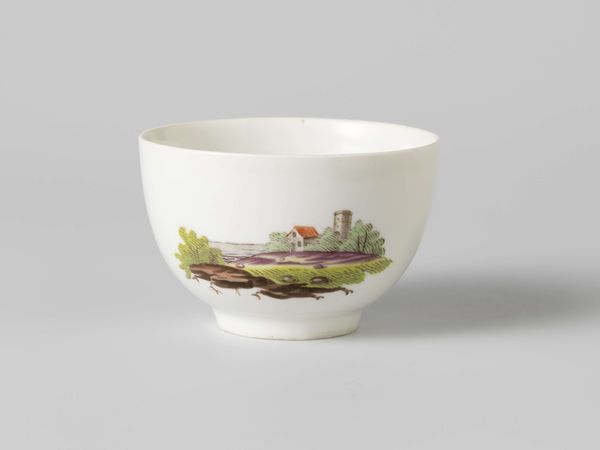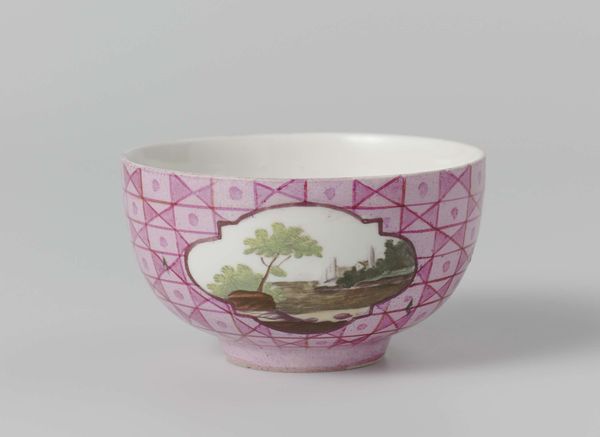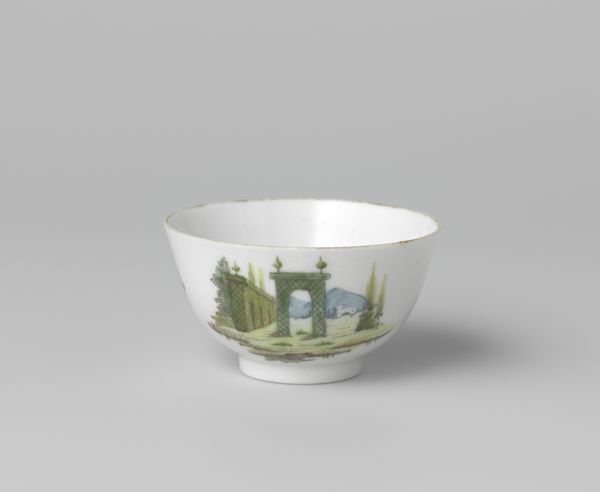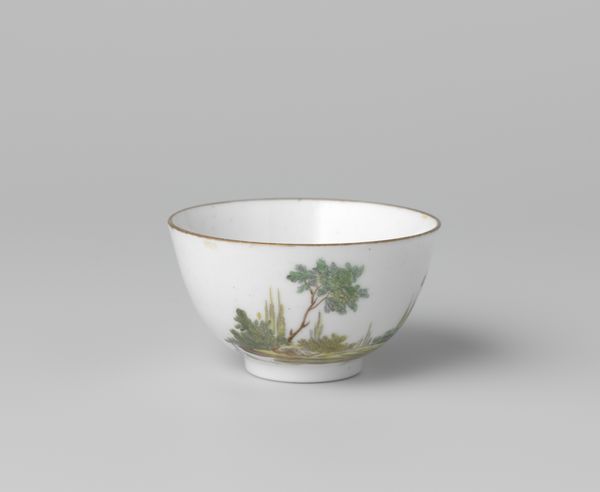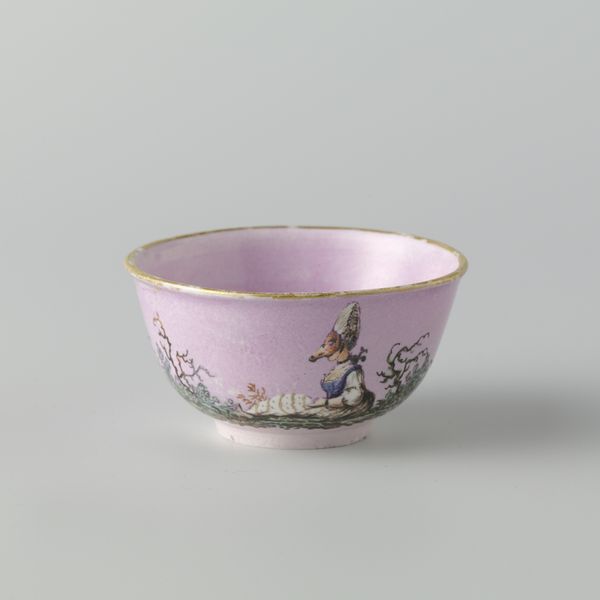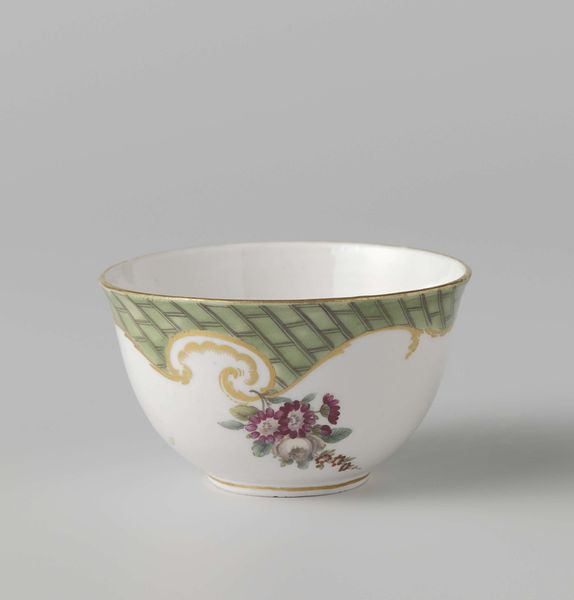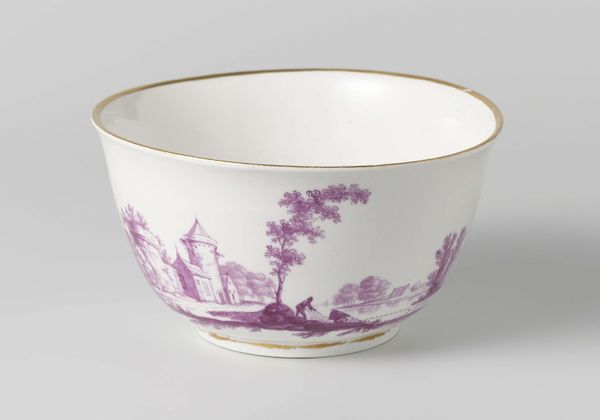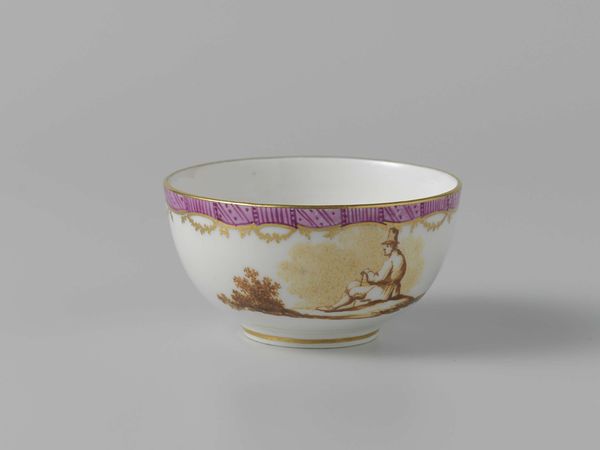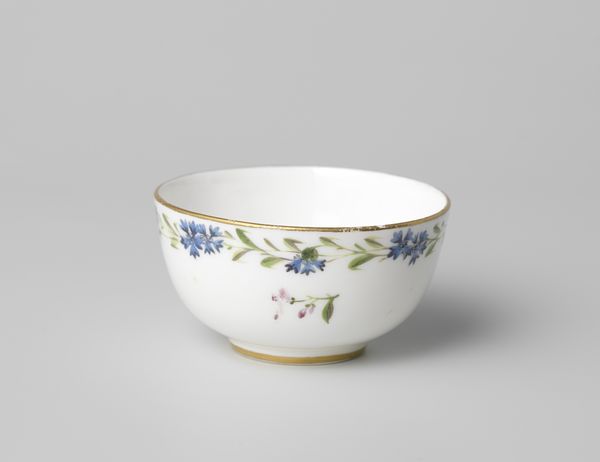
Theekop, deel van koffie- en theeservies met beschildering met figuren in rivierenlandschap in bietenrood before 1778
0:00
0:00
Dimensions: height 4.5 cm, diameter 8.5 cm
Copyright: Rijks Museum: Open Domain
Editor: So, this is a porcelain teacup, part of a larger tea and coffee service made by Loosdrecht before 1778. It’s decorated with little figures in a river landscape, all in this beautiful beet-red color. It’s delicate but the landscape imagery also gives it some depth. What's striking about this object to you? Curator: I’m immediately drawn to the materiality of it. We’re looking at porcelain, a highly prized commodity in the 18th century. Loosdrecht, a Dutch manufactory, was trying to replicate the coveted hard-paste porcelain from Asia and places like Meissen. Consider the labor involved: from sourcing the raw materials to the skill required for painting these tiny scenes. This wasn't just about drinking tea; it was about displaying wealth and participating in a global network of trade and consumption. Editor: That's fascinating. I hadn't really considered the global aspect of it. I was mostly focused on the painted scene itself, a little genre painting in miniature. So, how does the choice of the landscape scene relate to the social context? Curator: Well, landscape imagery provided a safe subject for the rising bourgeoisie, in that period, who sought to signal their access to leisure. Owning such porcelain was a deliberate choice. Think about it - did they portray explicit wealth in the paintings, or create landscapes that would be inviting and serene for a teatime chat? Editor: The landscape certainly speaks to an appreciation for nature and perhaps a desire for tranquility. Curator: Precisely. And beet-red is a fascinating color choice too, as that could also affect its reception and even pricing in its day, speaking again to the value attributed to specific material features. Thinking about the processes and the hands that made it allows us to view a teacup, as more than just a delicate item, it embodies stories about trade, taste, class, and artistic ambition. Editor: That definitely gives me a richer appreciation for the cup. I see it now as a small window into a whole world of 18th-century society. Curator: Exactly! Now, consider this lens while you study any new works from that time period.
Comments
No comments
Be the first to comment and join the conversation on the ultimate creative platform.
